The Anticipated Impact Measuring and Monitoring (AIMM) system evaluates a project’s development impact along two dimensions — project outcomes and market outcomes
Project Outcomes
Along the project outcome dimension, the AIMM system assesses a project’s effects on stakeholders, the economy, as well as the environment and society.
STAKEHOLDER EFFECTS assess the net incremental benefits that accrue from an IFC intervention. Stakeholders include the customers, suppliers, and employees of the company receiving financing, as well as local communities. In cases where the client is a financial intermediary, stakeholders will include recipients of loans or other financial services.
ECONOMY-WIDE EFFECTS are those indirect or induced economic outcomes, including externalities and spillovers that are generated by the project’s linkages to the economy. When relevant, IFC uses economic modeling tools to estimate these effects (mainly on value added and job creation).
ENVIRONMENTAL EFFECTS relate to environmental and social sustainability outcomes such as the reduction or avoidance of greenhouse gas emissions, improved water efficiency, reduced pollution, biodiversity effects, and/or improvements in social welfare not captured as part of a stakeholder or economy-wide effect.
Market Outcomes
For market outcomes, the AIMM system assesses the degree to which an intervention improves the structure and functioning of markets by promoting one or more of the following objectives.
COMPETITIVENESS: Competitive markets are those where firms can effectively enter, exit, and compete, innovating and striving for efficiency under essential regulatory and government intervention. These markets also support product or process innovation, improved management practices, and/or lower product cost.
RESILIENCE: This objective refers to improving the depth, structure, regulation, and governance of markets to help them withstand physical, financial, economic and/or climate related shocks and stresses, where relevant.
INTEGRATION: Integrated markets improve the reach and delivery of services by increasing physical and/or financial connectivity, within and across markets.
INCLUSIVENESS: Markets that are more inclusive are those that support fair and full access by marginalized groups to goods and services, finance, and economic opportunities.
SUSTAINABILITY: Sustainable markets are those where firms and consumers adopt climate related, environmentally and socially sustainable products, technologies and practices.
Creating markets is difficult and often takes multiple and coordinated interventions that involve upstream activities and market enabling work at the sector level. To deliver one or more of the market objectives, IFC’s interventions rely on at least four channels through which sector-wide or systemic market changes flow.
Impact Potential
Sector frameworks help to assess desired effects by assigning ratings in four areas:
- How big is the problem IFC is seeking to address?
- How much does the project contribute to the solution?
- Based on the problem and contribution, what is the potential to deliver desired effects?
- What is the likelihood that the project will deliver the desired effects?
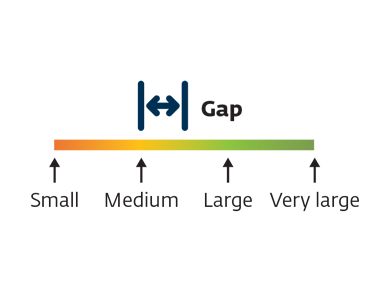
Along the project outcomes dimension, the gap analysis is an assessment of the relative size of the development challenge that each desired effect is addressing. When compared to other IFC emerging market and developing countries within the same sector, the gap assessment will identify where a country falls along a spectrum.
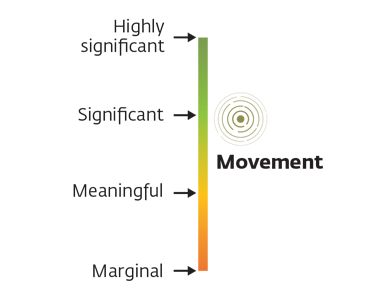
A project’s contribution to overcoming development gaps is measured by its intensity. Along the project outcomes dimension, project effects are assessed for the degree to which they are contributing to a solution. The assessment is based on sector-specific benchmarks that are normalized so that small but well-targeted projects are not penalized.
Once a gap assessment is paired with an intensity assessment, an overall potential impact rating is assigned. The potential for a particular effect to generate impact is a function not only of the scale of the problem (how wide the gap is), but also the efficiency of the intervention (its intensity). This approach gives greater weight to projects addressing wider development gaps and/or to projects that are innovative or creatively designed to deliver outcomes efficiently.
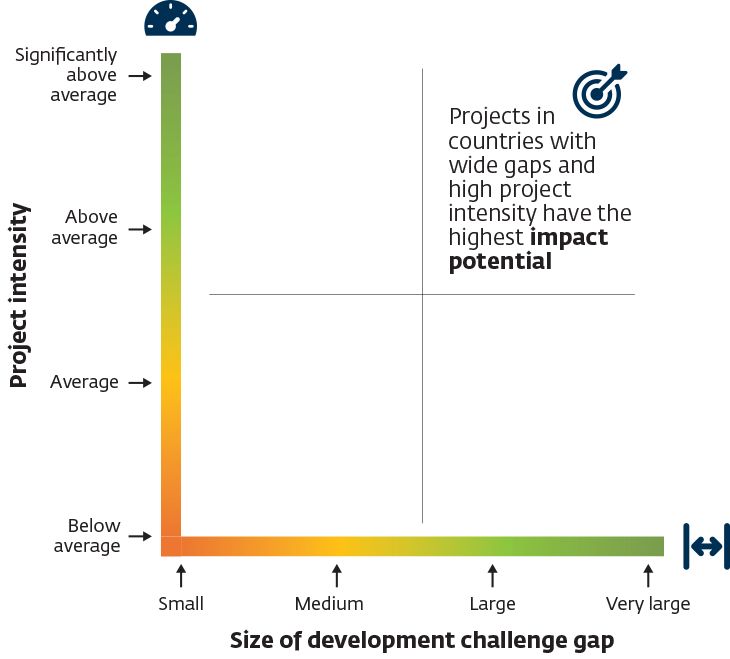

Along the market creation dimension, a similar gap assessment is made using market typologies to describe different stages of market development. The market creation dimension assigns stages to market development for each of the five market attributes. The AIMM system defines how developed the market is by situating the current market in one of these stages.

A project’s contribution to improving the structure and functioning of markets is measured by an assessment of market movement. Similar to the project outcomes dimension, a judgment is made as to how much a project contributes to the promotion of identified market attributes.
Once a market stage assessment is paired with a market movement assessment, an overall potential impact rating is assigned. The potential for a systemic change in the market is a function of both the stage of market development and the catalytic change that IFC expects its project to generate. The rating system gives greater weight (assigns higher potential ratings) to effects that address the widest development gaps and least advanced markets. Detailed mappings of market gaps and stages along with potential project intensities and market movements are set out in the respective sector frameworks.
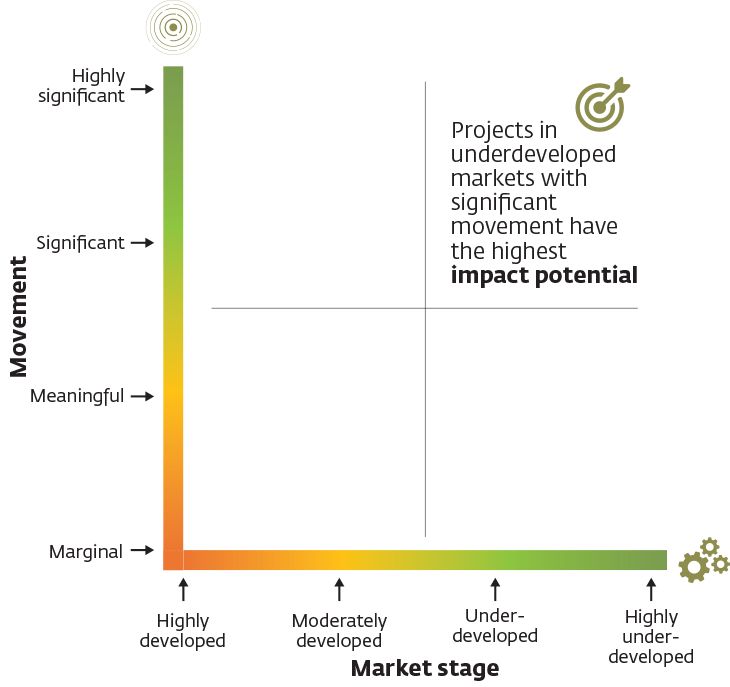
Likelihood
The AIMM system considers the uncertainty of realizing and sustaining the desired effects, for both project and market-level dimensions, over time. The likelihood assessment is intended to make a distinction between the potential outcomes that a project could deliver and risks that may affect their realization. The likelihood that the desired effects will be achieved and sustained over time falls into three rating categories: Low, Medium, and High.
AIMM Rating & Score
An ex-ante AIMM rating is based on a series of qualitative judgements that are converted into a score.
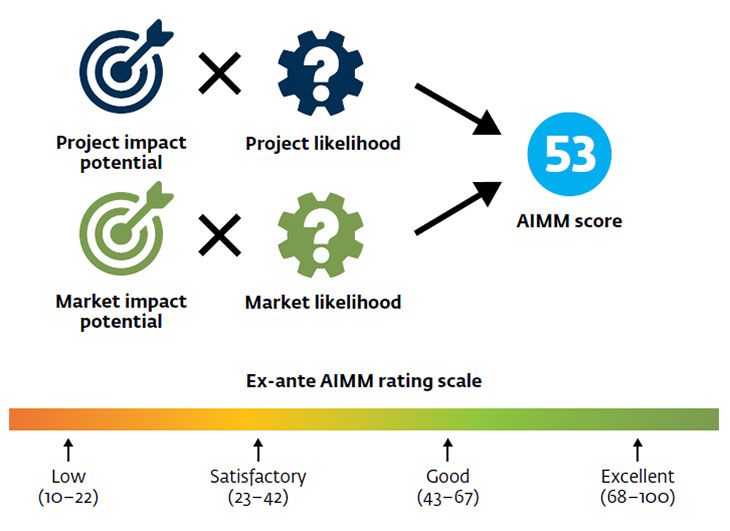
IFC uses AIMM ratings to better select and design interventions that maximize impact. The aggregation of AIMM scores for different business segments helps IFC manage its pipeline of interventions and develop strategies to address deficiencies. Portfolio ratings will also help IFC balance strategic priorities in pursuit of the portfolio approach, which seeks to maximize development impact consistent with the need to generate sustainable, risk-adjusted financial returns.
